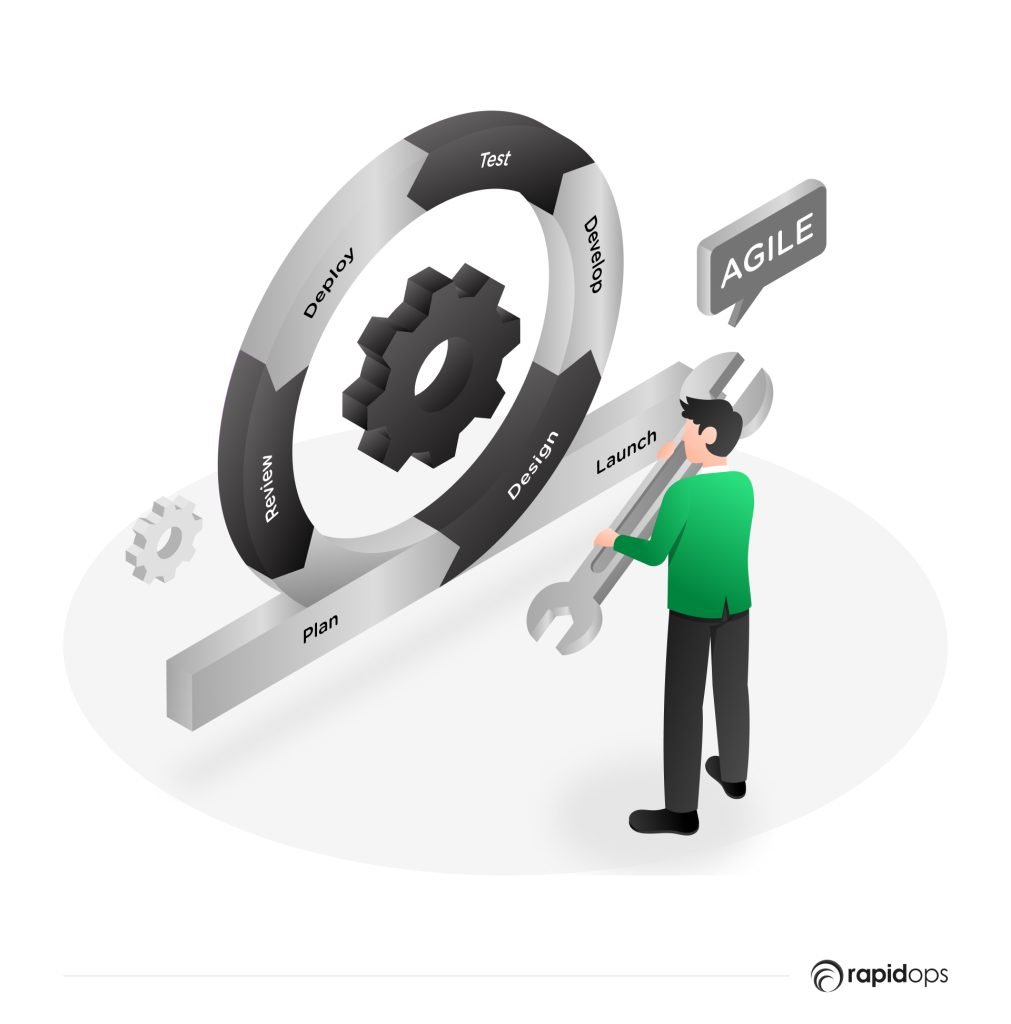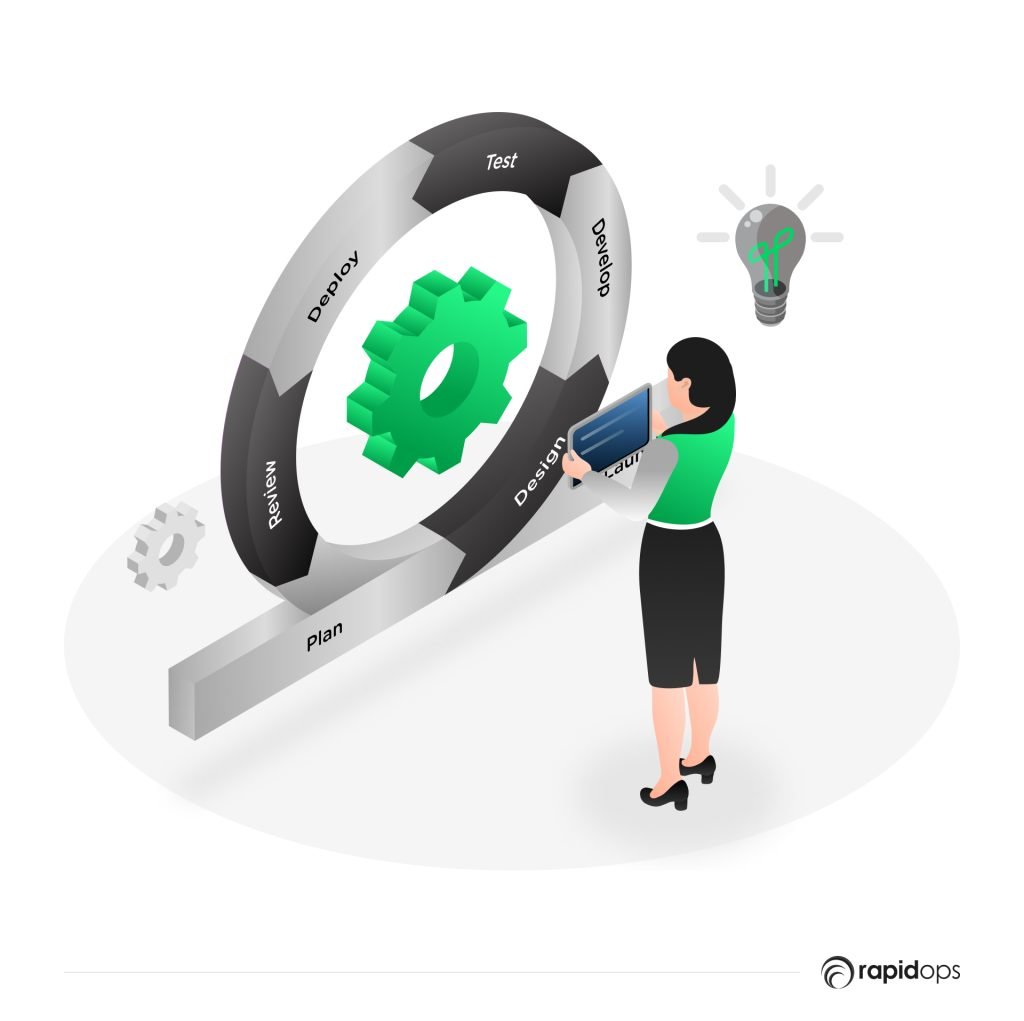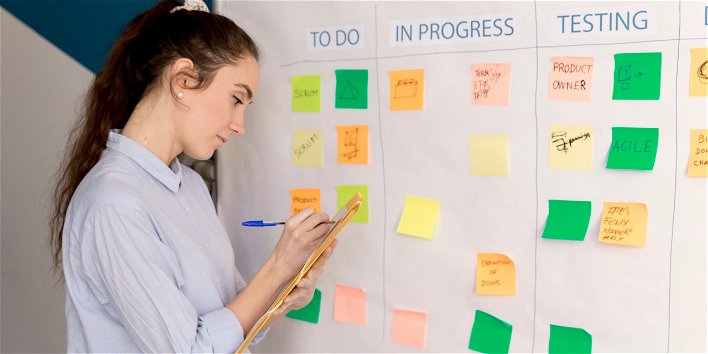- Engineering
- March 2022
Epoch-making Transition To Agile Development Process
The software development industry has undergone a significant shift in recent years with the widespread adoption of agile methodologies. Gone are the days of traditional waterfall approaches, as agile practices have proven to be more flexible and responsive to change.
Agile development has revolutionized how we build and deliver software, enabling teams to adapt quickly to changing requirements and deliver value faster. But what exactly is agile development, and how has it become the dominant approach in the software industry?
The Agile Development Approach

Agile development is not a methodology in itself. Instead, it is an umbrella term that touches upon several agile methodologies, including Scrum, XP, Crystal, FDD, and DSDM. Lean practices have emerged as part of the agile methodology too.
With Agile Development Process, you are bound to give value to:
- Varied Individuals and interactions rather than overarching processes and tools
- Working software over detailed documentation
- Consistent customer collaboration over negotiation plans
- Change Response rather than plan alignment
Agile Development Methodology Over Waterfall Model
The principles of agile software development were devised to break the problems faced due to process inflation while focusing on straightforward techniques for meeting the goals.
Delivering the highest possible value to customers now gets top priority rather than adherence to plan.
The key to the Agile technique is the thoughtful convergence of five sequences of conventional software development methods, termed the Waterfall model, in a one-week cycle.
This system relies on repeated cycles based on iterations in small incremental portions, thus allowing developers to get their code tested and reviewed during the development process.
The Agile Development Methodology delivers increased speed, lower costs, and the utmost flexibility if done right.
The Waterfall model is a linear software design model that employs a sequential process wherein development flows sequentially from initiation to deployment, comprising several different stages.
The Agile method, on the other hand, combines both the incremental and iterative approach to alleviate the limitations of the Waterfall model and give designers more freedom than before.
The design process is disintegrated into individual models, and there is no set course of action or plan so that changes are made whenever issues arise.
SCRUM, Crystal, Test-Driven Development (TDD), Feature-Driven Development (FDD), Extreme Programming (XP), and even the latest Adaptive Software Development (ADP) are part of the agile methodology wherein teams have tuned their flavour of agility depending on their needs.
The combination of SCRUM and XP has been adopted by many, as SCRUM practices are used to manage teams that use Extreme Programming.
Top tips to follow while embracing the Agile development approach

- Begin the transitions with a perfect and accurate readiness assessment, keeping the organization and its people in view.
- Check out for traditional roadblocks related to the software development cycle and collaborate with IT professionals to devise better ways to implement the methodology. 'Walk before you run' is the best approach.
- Educating the naysayers about the benefits of the agile development process is very useful. Most critics come out of the woodwork when they need clarification about the reasons for the transition's success and efficacy.
- A pilot project can help dispel the myths and convey the same to those not actively part of the transition.
- Business priorities come first, and the planned process comes later in the agile methodology. This approach helps convince non-tech executives to implement a collaborative process as part of the business strategy.
- The engagement of the entire organization is crucial to the success of the agile development process. Even the customers and subject matter experts need to be in the loop.
- The technical writers should understand the approach's benefits and then get to document it perfectly. Dispelling fears about the process goes a long way for the organization.
- Pick an essential project for working through the agile process. If a complex project is taken care of, it will be easier to try the same approach for the other projects.
- Handle resource scalability problems with the agile process regarding assigned engineers to the project, with help from e-learning and knowledge transfer.
- Gather metrics to ensure that the approach is taken up in a planned manner. With metrics, one can convince people with documented evidence that the agile approach will help in boosting productivity in more ways than one.
- For example, one can resort to sprint burn-down charts wherein scrum teams organize the development process in time-boxed sprints, keeping track of completed work based on time-bound forecasts.
- Other metrics include epic and release burn-down (works with a larger body of projects) and Velocity charts (average amount of work completed in a sprint by the scrum team).
- It is important to fail fast for better success with the agile approach. You must gauge the overall problems quickly before any major problem delivers impediments. It is not just about attitude shift but a way to learn how to avoid going about the development process.
Closing lines
The transition to agile development has been a game-changer for the software industry, allowing teams to respond quickly to changing needs and deliver value faster.
A good agile team picks technical practices and resources that work best for them. Unfortunately, when trying to adopt Agile practices, many will need help with why it won't work.
But those who understand its natural benefits and are keen on the transition will ultimately achieve success.




